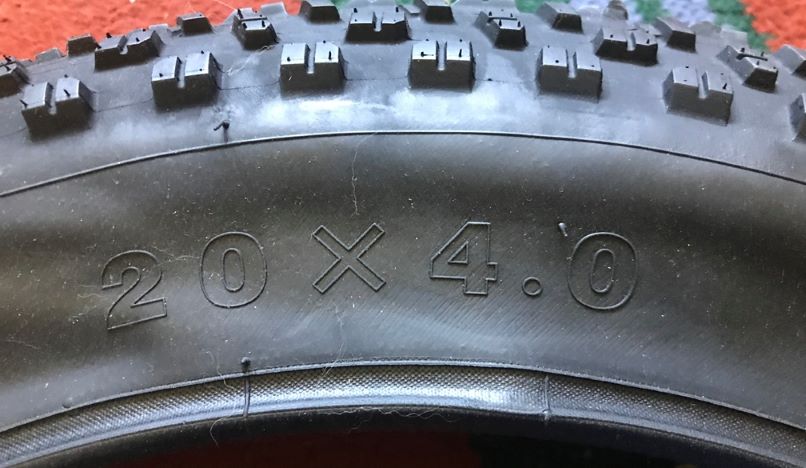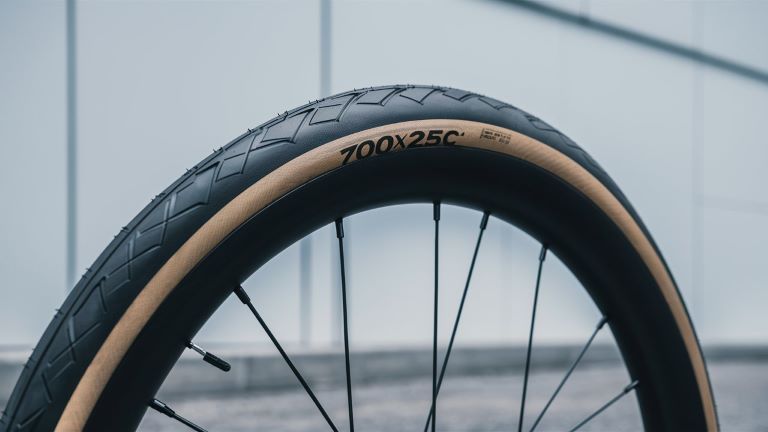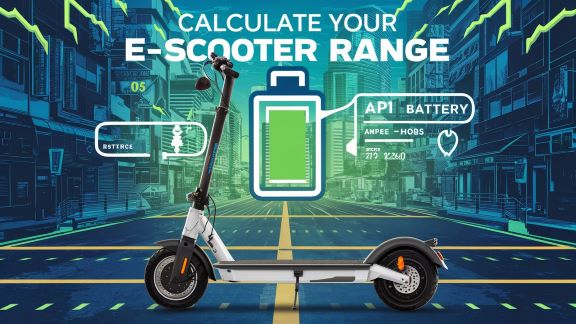Knowing what the numbers on your bike’s tyres mean is the first step in your cycling journey. When we look closely, each marking on the sidewall tells us about the tyre’s size and dimensions. It’s often a number game that appears as diameter x width like 26×2.0 or 700x25C. Now, you might ask, how does that matter? Well, here’s the twist. The correct tyre size isn’t just about fitment, it greatly influences safety, speed, comfort, and overall ride quality. So next time you glance at your bike’s tyres, don’t see merely rubber and dust – they have a story to tell! Now let’s try deconstructing those numbers together, shall we?
If you are not sure what your bike tyre size to buy for a replacement tyre just read the tyre information and buy the same tyre as that in short is the easy answer. The size is typically printed on the sidewall of the tyre and consists of numbers like 700C for road bikes or 29x.2.25 inches for electric mountain bikes, which indicate the diameter and width of the tyre. It’s crucial to match the tyre size with your bike’s wheel size specifications to ensure a proper fit and safe riding experience.

Expanded Tyre Conversion Chart
| ETRTO (mm) | Imperial (inches) | Metric (mm) | Common Use |
|---|---|---|---|
| 622×20 | 700x20C | 20-622 | Road Bikes |
| 622×23 | 700x23C | 23-622 | Racing Bikes |
| 622×25 | 700x25C | 25-622 | Touring Road Bikes |
| 622×28 | 700x28C | 28-622 | Hybrid Bikes |
| 559×57 | 26×2.25 | 57-559 | Mountain Bikes |
| 559×47 | 26×1.75 | 47-559 | Kids’ Mountain Bikes |
| 507×47 | 24×1.75 | 47-507 | Children’s Bikes |
| 406×44 | 20×1.75 | 44-406 | BMX |
| 686×75 | 27.5×3.0 | 75-686 | Plus-size Mountain Bikes |
| 622×40 | 700x40C | 40-622 | Cyclocross Bikes |
| 622×35 | 700x35C | 35-622 | Hybrid/Commuter Bikes |
| 584×57 | 27.5×2.25 | 57-584 | Modern Mountain Bikes |
| 622×50 | 700x50C / 29×2.0 | 50-622 | 29er Mountain Bikes |
| 622×57 | 29×2.25 | 57-622 | 29er Mountain Bikes |
| 622×60 | 29×2.35 | 60-622 | 29er Mountain Bikes |
| 559×100 | 26×4.0 | 100-559 | Fat Bikes |
| 559×120 | 26×4.7 | 120-559 | Fat Bikes |
| 622×110 | 29×4.3 | 110-622 | Fat Bikes |
| 622×120 | 29×4.7 | 120-622 | Fat Bikes |
| 507×100 | 20×4.0 | 100-507 | 20-inch Fat Bikes |
| 507×120 | 20×4.7 | 120-507 | 20-inch Fat Bikes |
Decoding the Tyre Size
Ah, the wonderful world of bike tires, where nothing is simple! Not only do we have metric and imperial measurements to contend with, but also something called ETRTO (ISO) which, if you ask me, sounds more like a stock ticker than a tire standard. It’s enough to make even a bike enthusiast want to throw in the towel! But fear not, fellow cyclists, for I’ll guide you through this confusing labyrinth.
First things first: Metric sizes are usually in millimetres, while imperial sizes use inches. And ETRTO — which stands for European Tyre and Rim Technical Organisation offers a standardized system used in Europe. The best advice I can give? Stick to what you’ve got. If you’re replacing a tire, just check the existing size, type it into Google, and voila, you’ll have the right replacement.
So don’t let the multiple standards give you a flat. Keep calm, pedal on, and remember, at least you don’t have to learn a fourth system ha!

The first number in the tyre size shows the diameter of the tyre (in inches for adult mountain bikes), and the second is its width (also in inches for mountain bikes). For example, if you see 26×2.0 written on your tyre, that means it has a diameter of 26 inches and a width of 2.0 inches.
My electric mountain bike was 26×2.25 so 26-inch wheels with a width of 2.25 inches, when I needed a new tyre just got a tyre with the same size as the outside of the tyre.
There are confusingly many different ways the sizes are shown though there is not one standard size
Comprehending Bike Tire Sizing: Metric, Imperial, and ETRTO (ISO) Dimensions
Bike tire dimensions are frequently communicated using three distinct measurement frameworks: metric, imperial, and ETRTO (European Tyre and Rim Technical Organisation), also recognized as ISO. Each system caters to various types of bicycles and individual riding preferences. This is the mechanism by which these systems operate and the consequences it has in terms of selecting appropriate tires:
Imperial units of measurement:
- Mainly utilised for mountain and recreational bicycles: Measurements are indicated in inches.
- Illustrations: – 26 x 2.25 inches: commonly seen on conventional mountain bikes, signifying a tyre diameter of 26 inches and a width of 2.25 inches. – 29 x 2.1 inches: employed by contemporary mountain bikes, featuring a tyre diameter of 29 inches and a width of 2.1 inches.
Metric Units of Measurement:
- Preferred for Road, Gravel, and Track Bicycles: Indicated in millimetres.
- In the French Sizing system, a measurement of 700x25c indicates that ‘700’ represents the estimated outer diameter in millimetres, while ’25’ denotes the width, also measured in millimetres. This particular sizing is frequently used for narrow tires designed for racing bicycles.
Sizing according to the ETRTO (ISO) standard:
- Unified Measurement System Throughout Europe: Offers a precise means of indicating tire and rim dimensions.
- The ETRTO size is indicated by a pair of numbers: the tyre width followed by the diameter of the tire bead seat, which corresponds to the rim, both measured in millimetres.
- An illustration: 25-622 denotes a tyre with a width of 25 mm and a bead seat diameter of 622 mm, often known as 700c in the context of road cycling.
Key factors to take into account:
- Compatibility and Safety: Selecting the appropriate size guarantees a proper fit of the tire onto the rim, thereby improving safety and overall performance. Inappropriately sized tyres may result in subpar handling, accelerated wear, and potential safety hazards.
- Gaining knowledge about conversions: Metric to Imperial: When converting a 700×25 mm tire to imperial measurements, it approximately equates to 28×1 inch. However, this conversion is not straightforward as the numbers represent different aspects of the tyre in each system. ETRTO to Other Systems: ETRTO serves as a more consistent and widely accepted standard for tire sizing, minimising confusion particularly in regions where both metric and imperial systems are used.
Aspect Ratios in Bike Tyre Sizes
So, what exactly is the aspect ratio in a bike tyre? It’s a way of describing the tyre’s height in relation to its width. For example, if you have a tyre with the measurement 700 x 25C, it means the tyre has a width of 25 millimetres and a height that is 700 multiplied by 25% (175mm). This can seem a bit confusing at first, but stick with me; I promise it gets easier to understand!
Aspect ratios aren’t just numbers; they can greatly affect your ride in terms of control, speed, and comfort. Let’s break it down.
Control
A higher aspect ratio means the tyre is taller and narrower, providing better sidewall support, which results in better control while navigating through rough terrains or making tight turns. Just like the shock absorbers on a car help keep it stable on bumpy roads, the aspect ratio of your bike tyres influences how your bike responds to different surfaces.
Speed
Conversely, lower aspect ratios mean the tyre is shorter and wider, reducing the height of the sidewall, which minimises flex during turns and allows for more efficient power transfer when pedalling. As a result, these tyres are better suited for speed-focused riding on smooth pavements like roads or race tracks; it’s like having a sports car with low-profile tyres for quick acceleration and top speeds.
Comfort
When it comes to comfort, it’s all about finding the right balance. Tyres with higher aspect ratios tend to absorb more shocks from uneven surfaces, making them ideal for longer rides or mixed terrains where rider comfort is key. On the other hand, lower aspect ratios sacrifice some comfort for improved speed and agility; it’s like choosing between a plush sedan with a softer suspension or a sporty coupe with stiffer handling.
Understanding aspect ratios isn’t just about decoding numbers; it’s about finding the perfect balance for your biking adventures. Whether you prioritise control on rough trails, speed on smooth roads, or comfort on long rides, knowing how aspect ratios impact your ride helps you make informed decisions when selecting your bike tyres.
By learning how different aspect ratios contribute to your biking experience, you’re ready to delve into the crucial relationship between matching tyre and rim sizes.
E-Bike Tire Compatibility
When selecting tires for electric bikes, it’s important to understand that e-bikes use the same types of tyres as traditional pedal-powered bicycles. There is no inherent difference in the thickness or quality of the tires designed for e-bikes compared to those used on standard bikes. Both types of bicycles can utilize the same tire models, which are capable of handling the specific demands of each riding style.
Significance of Tyre Pressure: Air and PSI
Tyre pressure may not be the most exciting topic when it comes to cycling, but it plays a crucial role in ensuring a safe and enjoyable ride. Think of it this way: The right amount of air in your tyres keeps the bike running smoothly. It’s like making sure you have enough air in a basketball to bounce it properly.
Proper tyre pressure and inflation help with grip, control, and resistance, some tyres even have the recommended psi to inflate the tyres to, you can usually go higher or lower if you wish, but the guideline does help if you have no clue what you are doing, like I used to be doing ha !
Maintaining the proper tire pressure is a lot like Goldilocks finding the perfect bowl of porridge—not too little, not too much, but just right.

More air means less rolling resistance and more speed on smooth roads, while less air offers more comfort and better traction on rough surfaces.
The correct tyre pressure isn’t just about preventing flats; it can also impact how fast or slow you can ride comfortably. For instance, for road bikes with narrow tyres, you’d want higher pressure for better speed and efficiency. On the other hand, mountain bikes or fat tyre bikes require lower tyre pressure for improved grip and cushioning on uneven terrain.
Impact of Tyre Pressure on Performance and Comfort
Keeping the right tyre pressure is about more than just avoiding flat tyres. It directly affects the performance and comfort of your ride.
- Rolling Resistance: Underinflated tyres increase rolling resistance, making it harder to pedal, while overinflated tyres can result in a jarring ride.
- Grip: Higher pressure provides better grip and is beneficial for riding on pavement or hard-packed trails. Conversely, lower pressures yield improved traction on softer surfaces like mud or loose gravel.
- Overall Ride Quality: Correct tyre pressure ensures a smoother riding experience by providing the ideal balance between firmness and shock absorption.
Now that we understand how vital tyre pressure is for our biking experience, let’s delve into the recommended pressures for different types of bikes and terrains as well as explore the impact on comfort and safety.
You can get ebike fat tyres from our store here, we also have white wall tyres and inner tubes for fatty bikes.
FAQs or Frequently Asked Questions
Can changing the size of bike tires improve comfort and handling?
Yes, changing the size of bike tyres can improve comfort and handling. By increasing tyre volume, riders can enjoy a smoother and more comfortable ride due to improved shock absorption. Additionally, wider tyres offer a larger contact patch, providing better traction and stability for enhanced handling, especially in cornering. According to a study conducted by Cycling Weekly, wider tyres reduce rolling resistance, resulting in a more efficient and comfortable cycling experience overall.
Can I interchange different tire sizes on my bike?
Yes, you can interchange different tyre sizes on your bike to some extent. However, it is important to understand the potential implications. Interchanging smaller tyres with larger ones may cause handling and stability issues, affecting your overall riding experience. On the other hand, using wider tyres can provide increased traction and comfort but may also result in more rolling resistance. It is best to consult a comprehensive tyre size guide or consult with a professional to determine the appropriate range of tyre sizes for your specific bike model and intended usage.
Are there specific tire sizes recommended for different types of bikes (e.g., road bikes, mountain bikes)?
Yes, there are specific tyre sizes recommended for different types of bikes. Road bikes typically have narrower tyres (around 23-28mm) for increased speed and reduced rolling resistance on smooth surfaces like pavement. Mountain bikes, on the other hand, usually have wider tyres (around 2.1-2.4 inches) with aggressive tread patterns for better traction and stability on off-road trails. Statistics show that using the recommended tyre size for each bike type can enhance performance and safety, ensuring optimal handling and control in respective riding environments.
I'm the passionate mind behind this online web shop. As an avid cyclist, I have a particular fondness for electric bikes and scooters, believing they offer a unique sense of freedom and joy. Not only do I enjoy riding them, but I also take pride in reviewing and sharing my insights about these fantastic machines. Additionally, as someone who suffers from dry eyes, I'm committed to stocking products that genuinely enhance and improve people's lives. Dive into my shop, and you'll find a curated selection of e-bikes, scooters, and other life-enhancing products that I stand by.






